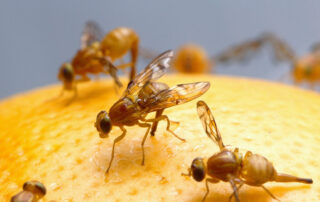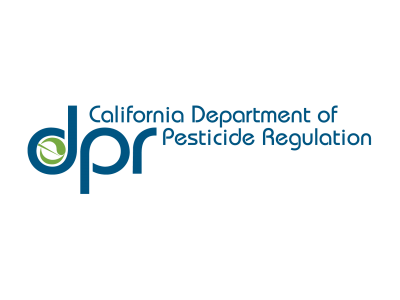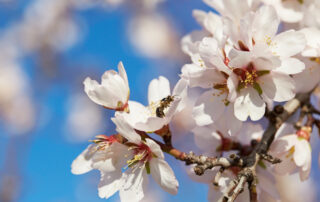Mexican Fruit Fly Quarantine in Portion of San Diego County
By CDFA
A portion of San Diego County has been placed under quarantine for the Mexican fruit fly following the detection of six flies and one larva in and around the unincorporated area of Valley Center. The United States Department of Agriculture (USDA), the San Diego County Agricultural Commissioner, and the California Department of Food and Agriculture (CDFA) are working collaboratively on this project.
The quarantine area in San Diego County measures 77 square miles, bordered on the north by Wilderness Gardens Preserve; on the south by the Lake Wohlford Park; on the west by Moosa Canyon; and on the east by Hellhole Canyon Preserve. A link to the quarantine map may be found here: www.cdfa.ca.gov/plant/mexfly/regulation.html.
As part of the eradication effort, approximately 250,000 sterile males will be released per square mile per week in an area of 43 square miles around the infestation. Sterile male flies mate with fertile wild female flies but produce no offspring. This reduces the Mexican fruit fly population as wild flies reach the end of their natural life span with no offspring to replace them, ultimately resulting in the eradication of the pest. In addition, properties within 200 meters of detections are being treated with an organic formulation of Spinosad, which originates from naturally-occurring bacteria, in order to remove any live fruit flies and reduce the density of the population. Fruit will also be removed within 100 meters of properties with larval detections and/or female fly detections.
The quarantine will affect any growers, wholesalers, and retailers of host fruit in the area as well as nurseries with Mexican fruit fly host plants. Local residents and home gardeners affected by the quarantine should consume homegrown produce on-site, to include canning, freezing or juicing and should not move host items from their property. These actions protect against the spread of the infestation to nearby regions which may affect California’s food supply and our backyard gardens and landscapes.
The Mexican fruit fly can lay its eggs in and infest more than 50 types of fruits and vegetables, severely impacting California agricultural exports and backyard gardens alike. For more information on the pest, please see the pest profile at: www.cdfa.ca.gov/plant/go/MexFly. Residents who believe their fruits and vegetables may be infested with fruit fly larvae are encouraged to call the state’s toll-free Pest Hotline at 1-800-491-1899.
The eradication approach used in the Valley Center area of San Diego County is the standard program used by CDFA and it is the safest and most effective and efficient response program available.
While fruit flies and other invasive species that threaten California’s crops and natural environment are sometimes detected in agricultural areas, the vast majority are found in urban and suburban communities. The most common pathway for these invasive species to enter our state is by “hitchhiking” in fruits and vegetables brought back illegally by travelers as they return from infested regions of the world. To help protect California’s agriculture and natural resources, CDFA urges travelers to follow the Don’t Pack a Pest program guidelines (www.dontpackapest.com).
Federal, state, and county agricultural officials work year-round, 365 days a year, to prevent, deter, detect, and eliminate the threat of invasive species and diseases that can damage or destroy our agricultural products and natural environment. These efforts are aimed at keeping California’s natural environment and food supply plentiful, safe, and pest-free.


















